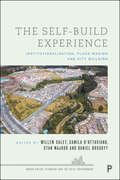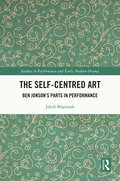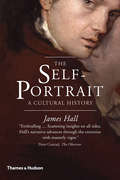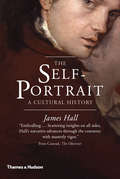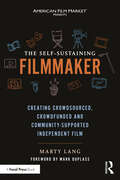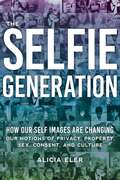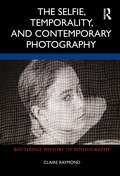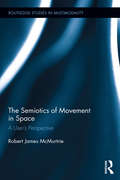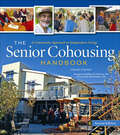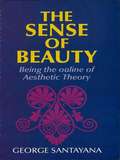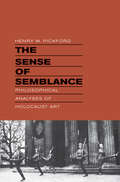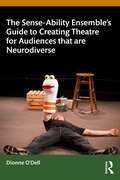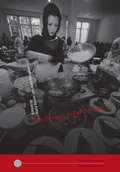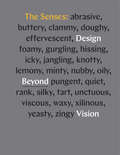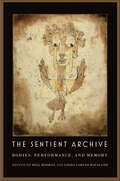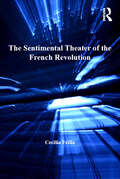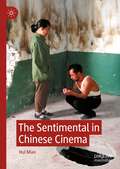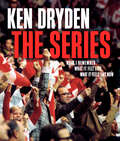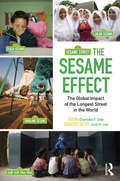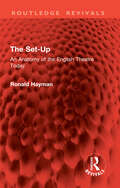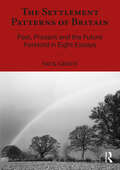- Table View
- List View
The Self-Build Experience: Institutionalization, Place-Making and City Building (Urban Policy, Planning and the Built Environment)
by Willem Salet, Camila D’Ottaviano, Stan Majoor and Daniël BossuytUsing a broad international comparative perspective spanning multiple countries across South America, Europe and Africa, contributors explore resident-led self-building for low and middle income groups in urban areas. Although social, economic and urban prosperity differs across these contexts, there exists a recurring, cross-continental, tension between formal governance and self-regulation. Contributors examine the multi-faceted regulation dilemmas of self-building under the conditions of modernization and consider alternative methods of institutionalization, place-making and urban design, reconceptualizing the moral and managerial ownership of the city. Innovative in scope, this book provides an array of globalized solutions for navigating regulatory tensions in order to optimize sustainable development for the future
The Self-Centred Art: Ben Jonson's Parts in Performance (Studies in Performance and Early Modern Drama)
by Jakub BoguszakThe Self-Centred Art is a study of the plays of Ben Jonson and the actors who first performed in them. Jakub Boguszak shows how the idiosyncrasies of Jonson’s comic characters were thrown into relief in actors’ part-scripts—scrolls containing a single actor’s lines and cues—some five hundred of which are reconstructed here from Jonson’s seventeen extant plays. Reading Jonson’s spectating parts, humorous parts, apprentice parts, and plotting parts, Boguszak argues that the kind of self-absorption which defines so many of Jonson’s famous comic creations would have come easily to actors relying on these documents. Jonson’s actors would have moreover worked on their cues, studied their speeches, and thought about the information excluded from their parts differently, depending on the type they had to play. Boguszak thus shows that Jonson brilliantly adapted his comedies to the way the actors worked, making the actors’ self-centredness serve his art. This book addresses Jonson’s dealings with the actors as well as the printers of his plays and supplements the discussion of different types of parts with a colourful range of case studies. In doing so, it presents a new way of understanding not just Ben Jonson, but early modern theatre at large.
The Self-Portrait: A Cultural History
by James HallSheds new light on the long history of self-portraiture with fresh interpretations of famous examples and new works, ideas, and anecdotes This broad cultural history of self-portraiture brilliantly maps the history of the genre, from the earliest myths of Narcissus and the Christian tradition of "bearing witness" to the prolific self-image-making of today's contemporary artists. Focusing on a perennially popular subject, the book tells the vivid history of works that offer insights into artists' personal, psychological, and creative worlds. Topics include the importance of the medieval mirror craze in early self-portraiture; the confessional self-portraits of Titian and Michelangelo; the mystique of the artist's studio, from Vermeer to Velázquez; the role of biography and geography for serial self-portraitists such as Courbet and Van Gogh; the multiple selves of modern and contemporary artists such as Cahun and Sherman; and recent developments in the era of globalization. Comprehensive and beautifully illustrated, the book features the work of a wide range of artists including Beckmann, Caravaggio, Dürer, Gentileschi, Ghiberti, Giotto, Goya, Kahlo, Kauffman, Magritte, Mantegna, Picasso, Poussin, Raphael, Rembrandt and Van Eyck. The full range of the subject is explored, including comic and caricature self-portraits, "invented" or imaginary self-portraits, and important collections of self-portraiture such as that of the Medici.
The Self-Portrait: A Cultural History
by James Hall“Hall provides a lively cultural interpretation of the genre from the Middle Ages to today. . . . Rather than provide a series of ‘greatest hits,’ he is more concerned with the reasons why artists create self-portraits.” —The Weekly Standard The self-portrait may be the visual genre most identified with our confessional era, but modern artists are far from the first to have explored its power and potential. In this broad cultural survey of the genre, art historian and critic James Hall brilliantly maps the history of self-portraiture, from the earliest myths of Narcissus and the Christian tradition of “bearing witness” to the prolific self-image-making of today’s contemporary artists. Hall’s intelligent and vivid account shows how artists’ depictions of themselves have been part of a continuing tradition that reaches back centuries. Along the way he reveals the importance of the medieval mirror craze; the explosion of the genre during the Renaissance; the confessional self-portraits of Titian and Michelangelo; the biographical role of serial self-portraits by artists such as Courbet and van Gogh; themes of sex and genius in works by Munch, Bonnard, and Modersohn-Becker; and the latest developments of the genre in the era of globalization. Comprehensive and beautifully illustrated, the book features the work of a wide range of artists including Alberti, Caravaggio, Dürer, Emin, Gauguin, Giotto, Goya, Kahlo, Koons, Magritte, Mantegna, Picasso, Raphael, Rembrandt, and Warhol.
The Self-Sufficient Home: Going Green and Saving Money
by Christopher NyergesHow to cut heating and cooling costs, utilize solar energy, construct nonflush toilets and solar showers, collect rainwater, and apply permaculture techniques. The author explains everything in plain, easily understood, language with hundreds of photographs and diagrams that illustrate ways to use natural resources and embrace self-reliance. Sustainable living advice from self-reliance expert Christopher Nyerges, editor of "Wilderness Way" magazine and author of "How to Survive Anywhere."In an ever-changing economy, cutting costs and utilizing available resources is essential. From embracing solar energy and wind power to using fluorescent bulbs and growing backyard vegetable gardens, there are endless ways to live a more ecological and economical lifestyle. The book offers a collection of testimonials and hordes of practical information on living lightly on the planet.
The Self-Sustaining Filmmaker: Creating Crowdsourced, Crowdfunded & Community-Supported Independent Film
by Marty LangThis book provides guidance on how to build an independent, financially sustainable filmmaking career through channels such as crowdsourcing, crowdfunding, and community filmmaking concepts.Through real-life experiences, Marty Lang provides insight on how to use these key concepts through every stage of a film’s lifecycle – from distribution (the stage that should be figured out first), through development, screenwriting, prep, production and post, all the way through marketing and the film’s release. By thinking of filmmaking as a start-up company, and looking at how businesses make money, Lang creates a completely independent financial model for films, turning filmmakers into businesspeople, conscious of the needs of their audiences, and empowered to use their creative work to make their living. Using interviews with leaders in the field, case studies, and practical experience gained from 20 years of community filmmaking, this book unveils an exciting, new way to make films that prioritizes a collaborative, entrepreneurial mindset at every stage.This is an essential guide for aspiring and seasoned filmmakers alike looking to understand and apply crowdsourcing as an effective tool in their career.
The Selfie Generation: How Our Self-Images Are Changing Our Notions of Privacy, Sex, Consent, and Culture
by Alicia Eler<p>Whether it's Kim Kardashian uploading picture after picture to Instagram or your roommate posting a mid-vacation shot to Facebook, selfies receive mixed reactions. But are selfies more than, as many critics lament, a symptom of a self-absorbed generation? <p>Millennial Alicia Eler's The Selfie Generation is the first book to delve fully into this ubiquitous and much-maligned part of social media, including why people take them in the first place and the ways they can change how we see ourselves. Eler argues that selfies are just one facet of how we can use digital media to create a personal brand in the modern age. More than just a picture, they are an important part of how we live today. <p>Eler examines all aspects of selfies, online social networks, and the generation that has grown up with them. She looks at how the boundaries between people’s physical and digital lives have blurred with social media; she explores questions of privacy, consent, ownership, and authenticity; and she points out important issues of sexism and double standards wherein women are encouraged to take them but then become subject to criticism and judgment. Alicia discusses the selfie as a paradox—both an image with potential for self-empowerment, yet also a symbol of complacency within surveillance culture The Selfie Generation explores just how much social media has changed the ways that people connect, communicate, and present themselves to the world.</p>
The Selfie, Temporality, and Contemporary Photography (Routledge History of Photography)
by Claire RaymondThis book is a theoretical examination of the relationship between the face, identity, photography, and temporality, focusing on the temporal episteme of selfie practice. Claire Raymond investigates how the selfie’s involvement with time and self emerges from capitalist ideologies of identity and time. The book leverages theories from Katharina Pistor, Jacques Lacan, Rögnvaldur Ingthorsson, and Hans Belting to explore the ways in which the selfie imposes a dominant ideology on subjectivity by manipulating the affect of time. The selfie is understood in contrast to the self-portrait. Artists discussed include James Tylor, Shelley Niro, Ellen Carey, Graham MacIndoe, and LaToya Ruby Frazier. The book will be of interest to scholars working in visual culture, history of photography, and critical theory. It will also appeal to scholars of philosophy and, in particular, of the intersection of aesthetic theory and theories of ontology, epistemology, and temporality.
The Selfie, Temporality, and Contemporary Photography (Routledge History of Photography)
by Claire RaymondThis book is a theoretical examination of the relationship between the face, identity, photography, and temporality, focusing on the temporal episteme of selfie practice.Claire Raymond investigates how the selfie’s involvement with time and self emerges from capitalist ideologies of identity and time. The book leverages theories from Katharina Pistor, Jacques Lacan, Rögnvaldur Ingthorsson, and Hans Belting to explore the ways in which the selfie imposes a dominant ideology on subjectivity by manipulating the affect of time. The selfie is understood in contrast to the self-portrait. Artists discussed include James Tylor, Shelley Niro, Ellen Carey, Graham MacIndoe, and LaToya Ruby Frazier.The book will be of interest to scholars working in visual culture, history of photography, and critical theory. It will also appeal to scholars of philosophy and, in particular, of the intersection of aesthetic theory and theories of ontology, epistemology, and temporality.
The Seminary Student Writes
by Deborah CoreDeborah Core offers practical guidance for beginning seminary students who feel overwhelmed and under-prepared to write the number and quality of papers their courses require. The book begins with reflections on writing as a sacred action, then addresses such practical matters as choosing and researching a topic; outlining, drafting, and polishing a paper; and using the proper format for footnotes and bibliography. Also included are sample papers in MLA and Chicago styles and an overview of grammar and usage.
The Semiotics of Movement in Space (Routledge Studies in Multimodality)
by Robert James McMurtrieThe Semiotics of Movement in Space explores how people move through buildings and interact with objects in space. Focusing on visitors to the Museum of Contemporary Art in Sydney, McMurtrie analyses and interprets movement and space relations to highlight new developments and applications of spatial semiotics as he proposes that people’s movement options have the potential to transform the meaning of a particular space. He illustrates people’s interaction with microcamera footage of people’s movement through the museum from a first-person point of view, thereby providing an alternative, complementary perspective on how buildings are actually used. The book offers effective tools for practitioners to analyse people’s actual and potential movement patterns to rethink spatial design options from a semiotic perspective. The applicability of the semiotic principles developed in this book is demonstrated by examining movement options in a restaurant and a café, with the hope that the principles can be developed and applied to other sites of displays such as shopping centres and transportation hubs. This book should appeal to scholars of visual communication, semiotics, multimodal discourse analysis and visitor studies.
The Senior Cohousing Handbook: A Community Approach to Independent Living
by Charles DurrettHow to make your senior years healthy, safe, social, and stimulating. "Architect and author Chuck Durrett's recently released book Senior Cohousing Handbook comes at a time of high interest in greening, sustainable housing and affordable living concerns. Durrett's new book is a comprehensive guide for baby boomers wishing to continue vibrant, active lifestyles." - EPR Real Estate News"Make your senior years safe and socially fun with the idea of senior cohousing and a book on the topic that shows how seniors can custom-build their neighborhood to fit their needs. This is housing built by seniors, not for them, and emphasizes independence and social networking. Any library strong in gerontology or social science and many a general lending library needs this. - James A. Cox, The Midwest Book Review"As a Baby Boomer, I've joked for a few years that we'll all end up living communally again because Social Security will be broke...This is one of the better ways to envision it."-- Sacramento Bee No matter how rich life is in youth and middle age, the elder years can bring on increasing isolation and loneliness as social connections lessen, especially if friends and family members move away.Senior cohousing fills a niche for this demographic—the healthy, educated, and proactive adults who want to live in a social and environmentally vibrant community. These seniors are already wanting to ward off the aging process, so they are unlikely to want to live in assisted housing. Senior cohousing revolves around custom-built neighborhoods organized by the seniors themselves in order to fit in with their real needs, wants, and aspirations for health, longevity, and quality of life. Senior Cohousing is a comprehensive guide to joining or creating a cohousing project, written by the US leader in the field. The author deals with all the psychological and logistical aspects of senior cohousing and addresses common concerns, fears, and misunderstandings. He emphasizes the many positive benefits of cohousing, including:Better physical, mental, emotional, and spiritual healthFriendships and accessible social contactSafety and securityAffordabilityShared resourcesSuccessful aging requires control of one’s life, and today's generation of seniors—the baby boomers—will find that this book holds a compelling vision for their future.Charles Durrett is a principal at McCamant & Durrett in Nevada City, California, a firm that specializes in affordable cohousing. He co-authored the groundbreaking Cohousing with his wife and business partner, Kathryn McCamant.
The Sense of Beauty: Being the Outline of Aesthetic Theory
by George SantayanaIt is remarkably appropriate that this work on aesthetics should have been written by George Santayana, who is probably the most brilliant philosophic writer and the philosopher with the strongest sense of beauty since Plato. It is not a dry metaphysical treatise, as works on aesthetics so often are, but is itself a fascinating document: as much a revelation of the beauty of language as of the concept of beauty.This unabridged reproduction of the 1896 edition of lectures delivered at Harvard College is a study of "why, when, and how beauty appears, what conditions an object must fulfill to be beautiful, what elements of our nature make us sensible of beauty, and what the relation is between the constitution of the object and the excitement of our susceptibility."Santayana first analyzes the nature of beauty, finding it irrational, "pleasure regarded as the quality of a thing." He then proceeds to the materials of beauty, showing what all human functions can contribute: love, social instincts, senses, etc. Beauty of form is then analyzed, and finally the author discusses the expression of beauty. Literature, religion, values, evil, wit, humor, and the possibility of finite perfection are all examined. Presentation throughout the work is concrete and easy to follow, with examples drawn from art, history, anthropology, psychology, and similar areas.
The Sense of Semblance: Philosophical Analyses of Holocaust Art
by Henry W. PickfordThe Sense of Semblance is the first book to incorporate contemporary analytic philosophy in interpretations of art and architecture, literature, and film about the Holocaust. The book’s principal aim is to move beyond the familiar debates surrounding postmodernism by demonstrating the usefulness of alternative theories of meaning and understanding from the Anglophone analytic tradition. The book takes as its starting point the claim that Holocaust artworks must fulfill at least two specific yet potentially reciprocally countervailing desiderata: they must meet aesthetic criteria (lest they be, say, merely historical documents) and they must meet historical criteria (they must accurately represent the Holocaust, lest they be merely artworks). I locate this problematic within the tradition of philosophical aesthetics, as a version of the conflict between aesthetic autonomy and aesthetic heteronomy, and claim that Theodor W. Adorno’s “dialectic of aesthetic semblance” describes the normative demand that a successful artwork maintain a dynamic tension between these dual desiderata. While working within a framework inspired by Adorno, the book further claims that certain concepts and lines of reasoning from contemporary philosophy best explicate how individual artworks fulfill these dual desiderata, including the causal theory of names, the philosophy of tacit knowledge, analytic philosophy of quotation, Sartre’s theory of the imaginary, work in the epistemology of testimony, and Walter Benjamin’s theory of dialectical images. Individual chapters provide close readings of lyric poetry by Paul Celan (including a critique of Derridean deconstruction), Holocaust memorials in Berlin, texts by the Austrian quotational artist Heimrad Bäcker, Claude Lanzmann’s film Shoah and Art Spiegelman’s graphic novel Maus. The result is a set of interpretations of Holocaust artworks that, in their precision, specificity and clarity, inaugurate a dialogue between contemporary analytic philosophy and contemporary art.
The Sense-Ability Ensemble’s Guide to Creating Theatre for Audiences that are Neurodiverse
by Dionne O'DellThe Sense-Ability Ensemble’s Guide to Creating Theatre for Audiences that are Neurodiverse is a practical handbook that explores how to create theatre for audiences that are neurodiverse.This book explores the journey of the Sense-Ability Ensemble in its quest to create theatre from the ground up for audiences that are neurodiverse. It demonstrates how to embark on this work, and how to move from a sensory-friendly model that adapts work to make it inclusive to a model that designs work with this specific audience in mind.This is accomplished through highlighting recommended practices, such as using live music, puppetry, and one-on-one audience member/actor interaction, exploring design considerations, sensory engagement, length, actor/staff training, non-linear storytelling, and the use of social narratives, as well as partnering with special education and occupational therapy professionals. It also offers practical suggestions for touring this theatre model, providing sample forms and methods of communication.Part case study, part how-to guide, this book will be of interest to theatre educators, practitioners, and students enrolled in courses on children’s theatre, devising, applied theatre, theatre for young audiences, and drama in education.
The Senses in Performance (Worlds of Performance)
by Sally Banes André LepeckiThis ground-breaking anthology is the first to be dedicated to assessing critically the role of the human sensorium in performance. Senses in Performance presents a multifaceted approach to the methodological, theoretical, practical and historical challenges facing the scholar and the artist. This volume examines the subtle actions of the human senses including taste, touch, smell and vision in all sorts of performances in Western and non-Western traditions, from ritual to theatre, from dance to interactive architecture, from performance art to historical opera. With eighteen original essays brought together by an international ensemble of leading scholars and artists including Richard Schechner and Philip Zarrilli. This covers a variety of disciplinary fields from critical studies to performance studies, from food studies to ethnography from drama to architecture. Written in an accessible way this volume will appeal to scholars and non-scholars interested in Performance/Theatre Studies and Cultural Studies.
The Senses: Design Beyond Vision
by Ellen Lupton Andrea LippsA powerful reminder to anyone who thinks design is primarily a visual pursuit, The Senses accompanies a major exhibition at the Cooper-Hewitt Smithsonian Design Museum that explores how space, materials, sound, and light affect the mind and body. Learn how contemporary designers, including Petra Blaisse, Bruce Mau, Malin+Goetz and many others, engage sensory experience. Multisensory design can solve problems and enhance life for everyone, including those with sensory disabilities. Featuring thematic essays on topics ranging from design for the table to tactile graphics, tactile sound, and visualizing the senses, this book is a call to action for multisensory design practice. The Senses: Design Beyond Vision is mandatory reading for students and professionals working in diverse fields, including products, interiors, graphics, interaction, sound, animation, and data visualization, or anyone seeking the widest possible understanding of design.The book, designed by David Genco with Ellen Lupton, is edited by Lupton and curator Andrea Lipps. Includes essays by Lupton, Lipps, Christopher Brosius, Hansel Bauman, Karen Kraskow, Binglei Yan, and Simon Kinnear.
The Sentient Archive: Bodies, Performance, and Memory
by Bill Bissell and Linda Caruso HavilandThe Sentient Archive gathers the work of scholars and practitioners in dance, performance, science, and the visual arts. Its twenty-eight rich and challenging essays cross boundaries within and between disciplines, and illustrate how the body serves as a repository for knowledge. Contributors include Nancy Goldner, Marcia B. Siegel, Jenn Joy, Alain Platel, Catherine J. Stevens, Meg Stuart, André Lepecki, Ralph Lemon, and other notable scholars and artists.Hardcover is un-jacketed.
The Sentimental Theater of the French Revolution (Performance In The Long Eighteenth Century: Studies In Theatre, Music, Dance Ser.)
by Cecilia FeillaSmoothly blending performance theory, literary analysis, and historical insights, Cecilia Feilla explores the mutually dependent discourses of feeling and politics and their impact on the theatre and theatre audiences during the French Revolution. Remarkably, the most frequently performed and popular plays from 1789 to 1799 were not the political action pieces that have been the subject of much literary and historical criticism, but rather sentimental dramas and comedies, many of which originated on the stages of the Old Regime. Feilla suggests that theatre provided an important bridge from affective communities of sentimentality to active political communities of the nation, arguing that the performance of virtue on stage served to foster the passage from private emotion to public virtue and allowed groups such as women, children, and the poor who were excluded from direct political participation to imagine a new and inclusive social and political structure. Providing close readings of texts by, among others, Denis Diderot, Collot d'Herbois, and Voltaire, Feilla maps the ways in which continuities and innovations in the theatre from 1760 to 1800 set the stage for the nineteenth century. Her book revitalizes and enriches our understanding of the significance of sentimental drama, showing that it was central to the way that drama both shaped and was shaped by political culture.
The Sentimental in Chinese Cinema
by Hui MiaoThis book explores manifestations and perpetuations of the sentimental in Mainland Chinese cinema from the 1990s to the 2000s. A sentimental Chinese cinema – one that articulates notions of homecoming and belonging – emerged in the 1990s with its distinctive styles. The representations and configurations of this evolving style of Chinese cinematic expression are not only thought provoking in their own right, but also in the way they contrast with past forms of Chinese sentimental cinema and with sentimental aesthetics elsewhere in the world. These new representations have transformed established family centred expressions of the sentimental in Chinese cinema. The new sentimental emphasises togetherness and a yearning for belonging which often appear in the themes of homecoming and home-longing. This also forms a cultural resistance towards the increasingly alienating and isolating forces of globalisation and urbanisation. This book analyses the sociocultural conditions that have allowed for a renewed understanding of the sentimental and the cultural identity markers that are perpetually under contestation.
The Series: What I Remember, What It Felt Like, What It Feels Like Now
by Ken DrydenA new book by Hall of Fame goalie and bestselling author Ken Dryden celebrates the 50th anniversary of the 1972 Summit Series SEPTEMBER 2, 1972, MONTREAL FORUM, GAME ONE: The best against the best for the first time. Canada, the country that had created the game; the Soviet Union, having taken it up only twenty-six years earlier. On the line: more than the players, more than the fans, more than Canadians and Russians knew. So began an entirely improbable, near-month-long series of games that became more and more riveting, until, for the eighth, and final, and deciding game—on a weekday, during work and school hours all across the country—the nation stopped. Of Canada&’s 22 million people, 16 million watched. Three thousand more were there, in Moscow, behind the Iron Curtain, singing—Da da, Ka-na-da, nyet, nyet, So-vi-yet! It is a story long told, often told. But never like this. Ken Dryden, a goalie in the series, a lifetime observer, later a writer, tells the story in &“you are there&” style, as if he is living it for the first time. As if you, the reader, are too. The series, as it turned out, is the most important moment in hockey history, changing the game, on the ice and off, everywhere in the world. As it turned out, it is one of the most significant events in all of Canada&’s history. Through Ken Dryden&’s words, we understand why.
The Sesame Effect: The Global Impact of the Longest Street in the World
by Charlotte F. Cole June H. LeeThe Sesame Effect details the wide-ranging work of Sesame Workshop and its productions across the world. With an emphasis on impact and evidence from research on projects in low- and middle-income countries, the book tells the stories behind the development of an international family of Muppet characters created for the locally produced adaptations of Sesame Street. Each chapter highlights the educational message of international co-productions and presents the cultural context of each project. Readers will understand the specific needs of children living in a given locale, as well as gain insight into the educational drivers of each project. These projects often deal with difficult issues, from race relations in the United States, to HIV/AIDS education in South Africa, to building respect across cultural divides in the Middle East. Readers will see how local productions have helped build a new mindset that values the importance of early childhood education, and how Sesame Street promotes a brighter future by building children’s academic skills, encouraging healthy habits, and by fostering attitudes that counter negative stereotypes and create appreciation of and respect for others. The Sesame Effect shows how, when magnified across the millions of children touched by the various international programs, Sesame Workshop and its projects are making a difference around the world.
The Set-Up: An Anatomy of the English Theatre Today (Routledge Revivals)
by Ronald HaymanOriginally published in 1973, this book investigates the power and the pressures behind English theatre in the late 20th Century, analysing its structure and systems, and the way that money and motives flow through it. On the one hand there are the organisations: the big national companies, the West End managements, the regional repertory theatres, the ‘fringe’ groups, the trade unions, the Arts Council. On the other are the individuals: actors, directors, playwrights, agents, administrators. Ronald Hayman’s challenging book illuminates the conflicts and contradictions in the set-up. It is a mine of information about how theatres are run, how shows pay their way, and what happens when they don’t.
The Settlement Patterns of Britain: Past, Present and the Future Foretold in Eight Essays (Planning, History and Environment Series)
by Nick GreenIn writing The Settlement Patterns of Britain Nick Green was inspired by the short story genre. His book is a collection of eight non-fiction short stories or essays, where the characters are the places, some of which appear more than once, usually as bit-part players, occasionally as the main protagonist. Preceded by a prologue describing Britain’s prehistory as a European peninsula, each essay covers a fixed period in the history of the development of Britain’s settlement patterns, sometimes long, more often quite short, beginning around 2,500 BC and ending about one hundred years in the future. Nick Green chose those periods that are particularly instructive in revealing how settlement patterns come to exist in the form they do and how they might develop in the future. Settlement patterns are not just about where a place is, but about how that place relates to others. They wax and wane with circumstance, and around each settlement’s fixed core, the patterns of living and working shift constantly, driven by forces beyond the control of any individual town or city or village. From Bronze Age communities to computer simulations, from the mediaeval wool trade to the hyper-networked society, from Viking invasions to the post-industrial era, the essays cover a broad sweep of history. They appear in chronological order, but are not intended to provide a continuous, linear historical narrative – nor do they: each essay is freestanding so they can be read in whatever order the reader prefers.
The Seven Lamps of Architecture
by John RuskinIn August of 1848, John Ruskin and his new bride visited northern France, for the gifted young critic wished to write a work that would examine the essence of Gothic architecture. By the following April, the book was finished. Titled The Seven Lamps of Architecture, it was far more than a treatise on the Gothic style; instead, it elaborated Ruskin's deepest convictions of the nature and role of architecture and its aesthetics. The book was published to immediate acclaim and has since become an acknowledged classic. <p><p> The "seven lamps" are Sacrifice, Truth, Power, Beauty, Life, Memory, and Obedience. In delineating the relationship of these terms to architecture, Ruskin distinguishes between architecture and mere building. Architecture is an exalting discipline that must dignify and ennoble public life. It must preserve the purity of the materials it uses; and it must serve as a source of power and renewal for the society that produces it. The author expounds these and many other ideas with exceptional passion and knowledge, expressed in a masterly prose style. <p> Today, Ruskin's timeless observations are as relevant as they were in Victorian times, making The Seven Lamps of Architecture required reading for architects, students, and other lovers of architecture, who will find in these pages a thoughtful and inspiring approach to one of man's noblest endeavors. <p> This authoritative edition includes excellent reproductions of the 14 original plates of Ruskin's superb drawings of architectural details from such structures as the Doge's Palace in Venice, Giotto's Campanile in Florence, and the Cathedral of Rouen.
